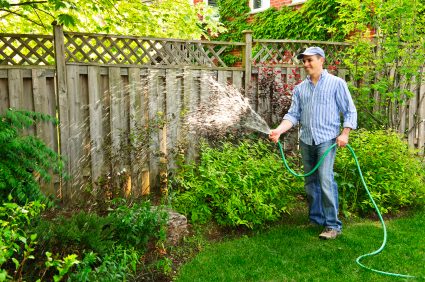Landscape and Garden Planning: Where to Put Your Garden for Maximum Yield
Where should you put your garden? It’s suggested that you choose a place that gets the most sun throughout the day. Avoid areas near large trees with wide-spreading roots and low areas that might flood or retain too much water. Stay within a hose length of a water faucet, but try not to plant within 2 feet of your house. The ground there is usually heavy with lime that has leached from the foundation, and it may be littered with old construction debris. Gentle slopes are fine, especially those facing south. Land at the bottom of a hill is almost always colder and wetter than the slope itself.

Once you have chosen the plot’s location, measure it, and make a diagram of it on a sheet of paper, mapping in where each crop will go. You can use a simple scale: 1 inch per foot, for example. Allow for walkways between groups of rows. In this way you can plan a garden that will produce crops all summer long.
- Size requirements: Do not try to crowd plants into less space than they require. Squashes and melons often sprawl, but radishes need very little space. Corn grows tall, as do asparagus and pole beans. Make sure they do not shade other plants. Brussels sprouts and cabbage need plenty of room.
- Time to harvest: Leaf lettuce can be picked in a matter of a few weeks, beets in about eight weeks, carrots in less than three months. These and other fast-maturing crops can succeed one another in the same soil: lettuce can be planted several times during the season; carrots or beets can be raised where peas once flourished; early carrots can be followed by fall spinach, lettuce by beans. Such “succession plantings” will give you several harvests from the same patch of soil.
Certain crops are planted only once because they need the whole summer to mature. Tomatoes, eggplants, and winter squashes need up to three months to ripen. They also require plenty of nutrients and ample space. Allot them a large, sunny area.
- Sunlight: Spinach and lettuce will grow well in partially shaded spots or between rows of such taller crops as broccoli or Brussels sprouts.
- Interplanting: Fast-maturing vegetables-leaf lettuce, mustard greens, or spinach-may be planted among the seedlings of slow-growing vegetables, such as peppers, eggplants, or tomatoes. Radishes are often planted in the rows of slower-growing carrots or parsley. They sprout quickly, and can be picked and eaten while the other vegetables are still small.
- Perennials: Rhubarb, asparagus, and strawberries need considerable space. Rhubarb and asparagus will not produce a crop until, at the earliest, two years after planting.
- Harvest yields: A long row of lettuce planted all at once will produce more salad than you can possibly eat. It is more practical to plant short rows of fast-maturing crops and to make succession plantings at two- or three-week intervals. If you have storage space, plant more winter squashes, onions, and potatoes. If you have a freezer, grow more Brussels sprouts, carrots, beets, and okra. For home canning, raise extra tomato plants.
- Planting times: Peas and spinach require cool spring weather. Tomatoes cannot be put out until it is certain that there will be no more frost.
Keep Your Gardening Growing: Plant From Spring to Fall
Early Spring: Plant as soon as the ground can be worked.
Plants: Broccoli, Cabbage, Fava Beans, Leeks, and Onion
Seeds: Endive, Lettuce, Onion sets, Pea, Radish, Spinach and Turnip
Midspring: Plant two weeks before the average last frost date.
Plants: Cauliflower
Plant one week later:
Seeds: Beet, Carrot, Onion sets, Parsnip, and Chard
Plant one week later:
Seeds: Bean, Corn and Early potatoes
Early Summer: Plant when soil and sun are warm.
Plants: Eggplant, Pepper and Tomatoes
Seeds: Cucumber, Melon, Lima Bean, Okra, Pumpkin, Squash and Winter potatoes
Midsummer to Fall: Plant in late June.
Seeds: Beet, Broccoli, Cabbage, Carro, Cauliflower, Lettuce and Radish
Plant in early August:
Plants: Broccoli*, Cabbage* and Cauliflower*
Seeds: Lettuce, Spinach and Turnip
Plant 10 weeks before first killing frost:
Seeds: Beets and Carrot
* Plants are set out later than seeds are sown because hot weather is not favorable to good growth.



